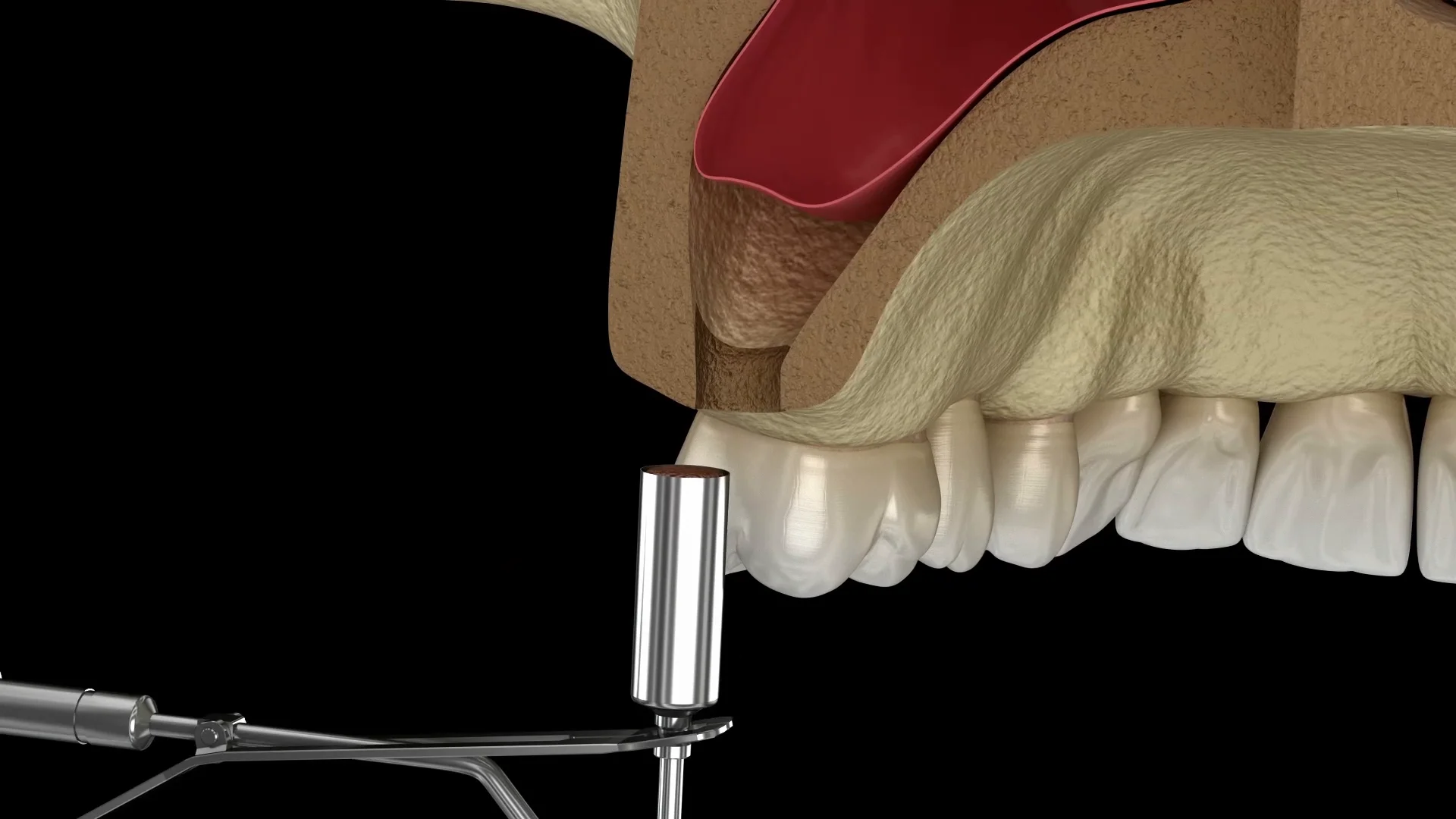Bone Grafting in Warren, NJ
Proper bone structure forms the foundation for successful dental implant placement, yet many patients experience bone loss following tooth extraction or due to periodontal disease. This deterioration can significantly limit treatment options and affect both functionality and appearance, leaving patients wondering if dental implants remain a possibility for their situation.

At Warren Oral Surgery, our team of six highly skilled surgeons specializes in advanced bone grafting techniques to restore your jawbone and prepare it for dental implant placement. With our state-of-the-art facility and comprehensive approach, we help patients overcome bone loss challenges and achieve the restored smile they desire.
Understanding Bone Loss
Bone loss in the jaw begins almost immediately after tooth extraction. Without the stimulation provided by natural tooth roots, the jawbone no longer receives signals to maintain its volume and density. Studies show that up to 29-63% of bone width can be lost within the six months after tooth extraction, with continued deterioration over time. This progressive loss affects not only your ability to receive dental implants but can also alter facial contours, creating a prematurely aged appearance.
The quality and quantity of available bone play crucial roles in determining implant success rates. Sufficient bone provides the necessary support for implants to properly integrate and withstand the forces of chewing and biting. When bone loss has occurred, bone grafting becomes an essential preliminary step in the implant process, creating a solid foundation for your new teeth.
We Take All Insurance Including Medicaid and Medicare
Expert oral surgery services covered by most insurance plans including Medicaid and Medicare for accessible care.

Bone Grafting for Dental Implants
After tooth extraction, thick-walled sockets typically fill naturally with bone within 2-3 months. However, when socket walls are thin (common in upper and lower front teeth), natural healing becomes less predictable. In these cases, we place bone grafts during extraction to help your body regenerate bone in the empty socket. This preserves the width and volume needed for successful implant placement later.
For patients whose teeth were removed years ago, resulting in extremely thin bone ridges, we may place a bone graft alongside the existing bone, allowing it to heal for up to six months. Once the graft fuses with your natural bone, we can safely place your implants. Most bone grafting procedures are comfortable outpatient treatments performed in our office with various grafting materials available, including your own bone.
The bone grafting process typically involves several key steps that ensure optimal results for future implant placement. These steps include:
- Assessment of existing bone structure
- Strategic placement of grafting material
- Healing period for bone integration
- Precise placement of dental implants
Our surgical team carefully plans and executes each step to ensure the best possible outcome for your specific case.
Types of Bone Grafting Materials
Several options exist for bone grafting materials, each with specific advantages depending on your clinical situation. Our surgeons carefully select the most appropriate material for your needs from these primary categories:
- Autografts: Bone harvested from your own body, typically from the chin, ramus (back of lower jaw), hip, or tibia. This option provides the most biocompatible material with natural bone-producing cells.
- Allografts: Human donor bone processed to ensure safety. This eliminates the need for a second surgical site.
- Xenografts: Bone material derived from other species (typically bovine), processed to remove all organic components while maintaining the mineral structure.
- Synthetic materials: Biocompatible materials specifically designed to mimic natural bone structure and promote new bone growth.
The selection of grafting material depends on factors including the extent of bone loss, your medical history, and the location of the intended implant. Our surgeons will discuss these options thoroughly during your consultation.
Major Bone Grafting
Our bone grafting techniques effectively repair implant sites with inadequate bone structure caused by previous extractions, periodontal disease, or injuries. We source bone material either from tissue banks or from your own body, typically from the jaw, hip, or tibia (below the knee).
For posterior upper jaw areas, we perform specialized sinus bone grafts. We may also use special dissolving membranes under the gum to protect the bone graft and encourage optimal regeneration. This advanced technique is called guided bone regeneration or guided tissue regeneration.
Major bone grafts repair significant jaw defects resulting from traumatic injuries, tumor surgery, or congenital conditions. These larger defects require using the patient’s own bone, harvested from areas such as the skull (cranium), hip (iliac crest), or lateral knee (tibia), depending on the amount needed. These more extensive procedures typically occur in an operating room and require a hospital stay.
Sinus Bone Grafting
You may need sinus bone grafting if your upper jaw sinus cavities are particularly large or positioned low, extending into tooth-bearing areas. This common situation occurs when upper back teeth have been missing for many years, limiting available bone for implant placement.
During a sinus grafting procedure, typically performed in our office with local anesthesia and possibly sedation, we carefully locate and elevate the sinus membrane. We then add bone material to restore proper height, ensuring we can place dental implants of adequate length. In many cases, we can perform this procedure simultaneously with implant placement for suitable candidates.
Several factors determine whether you may benefit from sinus bone grafting as part of your dental implant treatment. These factors include:
- Duration of tooth loss in the upper posterior region
- Size and position of your sinus cavities
- Current bone height in the implant placement area
- Overall oral health condition
- Desired type of implant restoration
Our comprehensive evaluation process will help determine if sinus grafting is necessary for your specific situation.
Recovery and Aftercare
Proper aftercare following bone grafting procedures significantly impacts the healing process and ultimate success. Most patients experience minimal discomfort, which is easily managed with prescribed pain medications. Some swelling and bruising may occur, but they typically subside within a week.
We provide detailed post-operative instructions that include:
- Dietary guidelines to protect the surgical site
- Proper oral hygiene practices during healing
- Activity restrictions to promote optimal recovery
- Warning signs that require immediate attention
- Follow-up appointment schedule
Complete healing and integration of the bone graft typically takes 4-6 months, depending on the extent of the procedure and individual healing factors. During this period, we carefully monitor your progress to ensure proper bone development before proceeding with implant placement.
Restore Your Smile with Warren Oral Surgery
At Warren Oral Surgery, our office operates six days a week and closes only on Sundays. Our recently renovated facility features 15 state-of-the-art operatories with the latest surgical technology. Our team of six highly skilled surgeons will determine if bone grafting is necessary for your dental implant success and create a personalized treatment plan.
Call (908) 222-7922 with any questions or to book your appointment today. Schedule a consultation to learn more about our bone grafting options and take the first step toward restoring your complete, confident smile. Contact us to begin your journey to a fully restored smile.

Procedures
Serving the Following NJ & Somerset County Areas:
Warren New Jersey • Watchung New Jersey • Green Brook New Jersey • Middlesex New Jersey • Bernards New Jersey • Basking Ridge New Jersey
Berkeley Heights New Jersey • Piscataway New Jersey • Bridgewater New Jersey • Plainfield New Jersey • Branchburg New Jersey
New Brunswick New Jersey • Stirling New Jersey • New Providence New Jersey • Chatham New Jersey • Madison New Jersey
Boundbrook New Jersey • Martinsville New Jersey • Westfield New Jersey • Springfield New Jersey • Summit New Jersey
